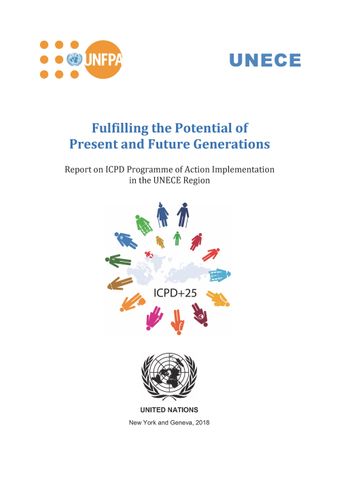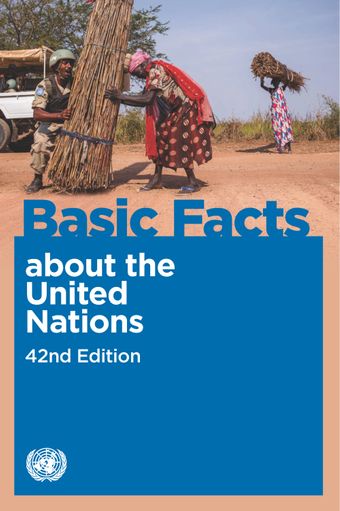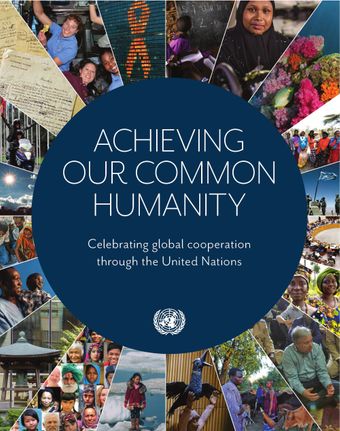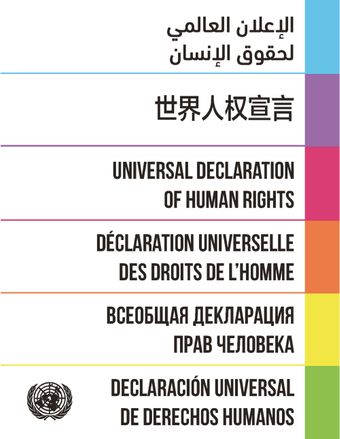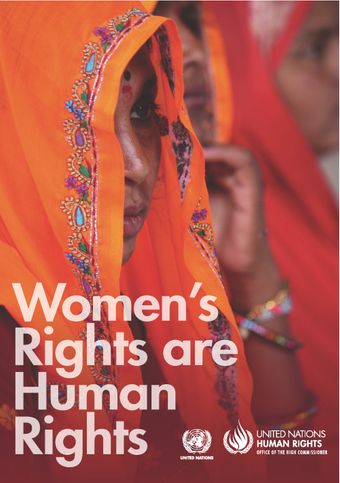Human Rights
10 December is Human Rights Day

Collection Contents
19 Результаты
-
-
Human Rights and Elections
A Handbook on International Human Rights Standards on Elections
Больше МеньшеWith hundreds of references to the jurisprudence of United Nations human rights mechanisms, this handbook provides human rights and electoral practitioners with a clear picture of the close interplay between elections and international human rights law. The handbook discusses international human rights standards regarding electoral processes and political participation, and how these standards apply to specific aspects of elections. Current issues such as gender-based violence in politics, disinformation and data manipulation, and the impact of Internet shutdowns are considered in the light of international human rights law and the recommendations of United Nations experts.
-
-
-
Inequalities, social inclusion and rights
Больше МеньшеАвтор: United NationsThe 2013 Chair’s summary highlighted that equality and non-discrimination are necessary preconditions for all individuals to enjoy their human rights and realize their potential. It called on member States to achieve gender equality and guarantee the social inclusion of marginalized population groups, which continue to suffer multiple and intersecting forms of inequality, disempowerment and discrimination.
-
-
-
Inequalities and the assault on human dignity
Больше МеньшеInequalities have a direct bearing on dignity—and thereby on human security. This chapter is concerned with horizontal inequalities—those experienced between groups of people based on some shared characteristic, including aspects of how they choose to self-identify. The chapter considers inequalities in terms of gender, race, ethnicity, sexual orientation and age, among others. It describes how discrimination, violence and violations of human rights parallel horizontal inequalities. It points to the importance of understanding intersectionality: because each person’s identity is plural, some face discrimination on multiple fronts. For instance, Black women face different forms of sexism from White women and different forms of racism from Black men. Horizontal inequalities often persist despite measures to outlaw or regulate their underlying drivers (through antidiscrimination laws, for example). Even when groups are formally protected against discrimination, social, political and cultural practices of exclusion can still erode people’s dignity. Many groups have little to no formal protection at all, as is the case for large numbers of people who identify as lesbian, gay, bisexual, transgender, intersex or another sexual minority (LGBTI+ people) around the world.
-
-
-
Human rights
Больше МеньшеАвтор: United NationsOne of the most significant achievements of the United Nations is the creation of a comprehensive body of human rights law (www.un.org/en/sections/ universal-declaration/human-rights-law)—a universal and internationally protected code to which all nations can subscribe and all people aspire. The United Nations has defined a broad range of internationally accepted rights, including civil, cultural, economic, political and social rights. It has also established mechanisms to promote and protect these rights and to assist states in carrying out their responsibiliti
-
-
-
Access to Remedy in Cases of Business-related Human Rights Abuse
A Practical Guide for State-Based Judicial Mechanisms
Больше МеньшеOver the course of six years, and in response to successive mandates from the Human Rights Council, OHCHR’s Accountability and Remedy Project developed guidance on how to enhance the effectiveness of the three categories of remedial mechanisms covered in the Guiding Principles on Business and Human Rights. For each category of mechanism, OHCHR spent two years consulting with those who use, design, and administer the mechanism, among others, to identify good-practice lessons, resulting in a set of reports presented to the Human Rights Council. This publication compiles the guidance and explanatory notes from those reports focusing on judicial mechanisms
-
-
-
Access to Remedy in Cases of Business-related Human Rights Abuse
A Practical Guide for Non-state-based Grievance Mechanisms
Больше МеньшеOver the course of six years, and in response to successive mandates from the Human Rights Council, OHCHR’s Accountability and Remedy Project developed guidance on how to enhance the effectiveness of the three categories of remedial mechanisms covered in the Guiding Principles on Business and Human Rights. For each category of mechanism, OHCHR spent two years consulting with those who use, design, and administer the mechanism, among others, to identify good-practice lessons, resulting in a set of reports presented to the Human Rights Council. This publication compiles the guidance and explanatory notes from those reports focusing on non-State-based grievance mechanisms.
-
-
-
Achieving our Common Humanity
Celebrating Global Cooperation Through the United Nations
Больше МеньшеАвтор: United NationsAchieving our Common Humanity: Celebrating Global Cooperation through the United Nations portrays landmark accomplishments of the United Nations in supporting peace and security, promoting and protecting human rights, fostering economic and social development, and shaping international law. Amply illustrated with photographs, charts, maps and infographics, and featuring a wealth of information on how the United Nations serves the peoples of the world, this book depicts a wide range of challenges that the Organization has met and successful initiatives that it has conceived and spearheaded as a matter of common purpose among nations in favour of collective human progress. Its rich tapestry of stories explores the diverse ways in which the United Nations fights poverty, combats climate change and protects the environment, undertakes to transform conflicts into peace, helps refugees thrive, supports sharing the benefits of technology, works to stop the spread of infectious diseases and reduce the risk of disasters, and helps render justice for all and ensure the rights of women and children. While recounting decisive innovations at the level of global policy and international agreement, Achieving our Common Humanity also provides a view of how such changes have significantly improved the lives of affected individuals around the world. These remarkable stories show how the United Nations, with its ambitious and evolving vision for the shared prosperity of people and planet, is helping create a better world for everyone.
-
-
-
Access to Remedy in Cases of Business-related Human Rights Abuse
An Interpretive Guide
Больше МеньшеThis interpretive guide provides additional background explanation on the principles of the access to remedy pillar of the Guiding Principles on Business and Human Rights so as to support a full understanding of their meaning and intent. It aims to equip all actors, whether specialist or non-specialist, with the knowledge and insights needed for more productive engagement and advocacy in relation to access to remedy for business and human rights harms in a wide range of contexts.
-
-
-
Всеобщая декларация прав человека (Многоязычная версия)
Больше МеньшеАвтор: United NationsThe Universal Declaration of Human Rights (UDHR) is the first international agreement setting out freedoms, rights and entitlements for all humanity to claim. It emphasizes the inextricable relationship between fundamental freedoms and social justice, and their connection with peace and security. The General Assembly of the United Nations proclaims this Universal Declaration of Human Rights as a common standard of achievement for all peoples and all nations, to the end that every individual and every organ of society, keeping the UDHR constantly in mind, shall strive by teaching and education to promote respect for these rights and freedoms and by progressive measures, national and international, to secure their universal and effective recognition and observance, both among the peoples of Member States themselves and among the peoples of territories under their jurisdiction. This edition presents the Universal Declaration of Human Rights in all six official United Nations languages.
-
-
-
Human Rights Fact Sheet
Больше МеньшеThe Human Rights Fact Sheet series is published by the Office of the United Nations High Commissioner for Human Rights, United Nations Office at Geneva. It deals with selected questions of human rights that are under active consideration or are of particular interest. Human Rights Fact Sheets are intended to assist an ever-wider audience in better understanding basic human rights, what the United Nations is doing to promote and protect them, and the international machinery available to help realize those rights.
-
-
-
Integrating a Gender Perspective into Human Rights Investigations
Guidance and Practice
Больше МеньшеАвтор: United NationsThis publication provides practical guidance on the integration of a gender perspective throughout the work of investigative bodies or entities, from the planning phase to the investigations and to writing the report and presenting its findings. It should be read in conjunction with existing OHCHR guidance in the Manual on Human Rights Monitoring and Commissions of Inquiry and Fact-finding Missions on International Human Rights and Humanitarian Law: Guidance and Practice. The publication specifically aims to strengthen the content of human rights reports in order to accurately depict the different experiences of women, men, girls and boys. It is primarily aimed at United Nations Human Rights Officers, especially those performing investigative functions, including with CoIs/FFMs. It may also be used as a reference material for the human rights monitoring, analysis and reporting performed by OHCHR field presences or as part of peace operations mandated by the Security Council and overseen, managed and supported by OHCHR. States Parties, regional mechanisms, national human rights institutions, national commissions of inquiry, civil society organizations and others could also benefit from guidance on how to integrate a gender perspective into monitoring and investigating human rights violations and abuses.
-
-
-
Protecting Minority Rights
A Practical Guide to Developing Comprehensive Anti-Discrimination Legislation
Больше МеньшеThis Guide sets out in detail the content of comprehensive anti-discrimination law. It provides legislators and advocates with the tools to develop anti-discrimination legislation consistent with international legal standards on the rights to equality and non-discrimination. It aims to assist States in meeting their core international law obligations to respect, protect, and fulfil the rights to equality and non-discrimination. This Guide also includes practical examples to assist law- and policy-makers. It also provides specific guidance on the link between anti-discrimination law on the one hand, and minority rights on the other.
-
-
-
Protecting the Human Rights of Migrants
A Course for Migration Officials in Africa
Больше МеньшеThis Facilitator’s Guide is intended to support trainers wishing to introduce the protection of the human rights of migrants to State officials on the African continent. The content is organized into four main modules, allowing each module to be used in isolation, or in combination with others depending on the need. The first module focuses on international law as the foundation of relations between States, and between States and individuals. It provides an overview of key human rights instruments, including the African Charter on Human and Peoples’ Rights, and their accountability mechanisms. Part of the emphasis of this module is on the historical evolution of the international legal system, and the thinking that led to the human rights instruments that followed the wars of the early 20th century. Subsequent modules address State authority in migration management, covering the admission of non-nationals and nationals returning home, as well as the detention and expulsion of those who are non-compliant with the requirements of entry or stay. Each of these is juxtaposed against a succession of individual human rights to facilitate understanding of the parametres of the State’s authority. Sections and subsections generally begin with a case study challenge to help participants focus on a specific tension between State authority and a human rights obligation in the migration context, followed by lecture notes for facilitators and a review of relevant case law and judicial reasoning. By using this Guide, trainers will be equipped to support officials in Africa in bridging the gap between the aspirations and principles of the United Nations Charter, international and regional human rights obligations, and the complexities of managing migration.
-
-
-
Professional Training Series in Human Rights
Больше МеньшеАвтор: United NationsTraining and Educational materials consist of guides, manuals and handbooks for indigenous peoples, minorities, professional groups (e.g. police, prison officials, judges, parliamentarians, human rights monitors, election monitors and social workers) and educational institutions.
-
-
-
Report of the Secretary-General on the Work of the Organization 2024
Resolve
Больше МеньшеАвтор: United NationsThe Report of the Secretary-General on the Work of the Organization (A/79/1) is issued in response to Article 98 of the UN Charter and highlights how the UN Secretariat translates resources into impact. The Report covers nine sections: (i) forging pathways for sustainable development; (ii) fostering peace and security; (iii) propelling African growth; (iv) upholding human rights; (v) securing humanitarian assistance; (vi) advancing justice and international law; (vii) championing disarmament; (viii) combating drugs, crime and terrorism; and (ix) enhancing our operations. The e-book for this publication has been converted into an accessible format for the visually impaired and people with print reading disabilities. It is fully compatible with leading screen-reader technologies such as JAWS and NVDA.
-
-
-
Report of the Human Rights Committee
Больше МеньшеАвтор: United NationsThe Human Rights Committee is the body of independent experts that monitors implementation of the International Covenant on Civil and Political Rights by its State parties. All States parties are obliged to submit regular reports to the Committee on how the rights are being implemented. The Committee examines each report and addresses its concerns and recommendations to the State party in the form of "concluding observations”.
-
-
-
Women's Rights Are Human Rights
Больше МеньшеAttaining equality between women and men and eliminating all forms of discrimination against women are fundamental human rights and United Nations values. Women around the world nevertheless regularly suffer violations of their human rights throughout their life, and realizing women’s human rights has not always been prioritized. Achieving equality between women and men requires a comprehensive understanding of the ways in which women experience discrimination and are denied equality so as to develop appropriate strategies to eliminate such discrimination. This publication provides an introduction to women’s human rights, beginning with the main provisions in international human rights law and going on to explain particularly relevant concepts for fully understanding women’s human rights.
-
-
-
World Programme for Human Rights Education
Больше МеньшеOn 10 December 2004, the General Assembly of the United Nations proclaimed the World Programme for Human Rights Education (2005-ongoing) to advance the implementation of human rights education programmes. The World Programme was established by the General Assembly’s resolution 59/113 (10 December 2004). Building on the achievements of the United Nations Decade for Human Rights Education (1995-2004), the World Programme seeks to promote a common understanding of basic principles and methodologies of human rights education, to provide a concrete framework for action and to strengthen partnerships and cooperation from the international level down to the grass roots. Unlike the specific time frame of the Decade, the World Programme is structured in consecutive phases, to further focus national human rights education efforts on specific issues.
-


